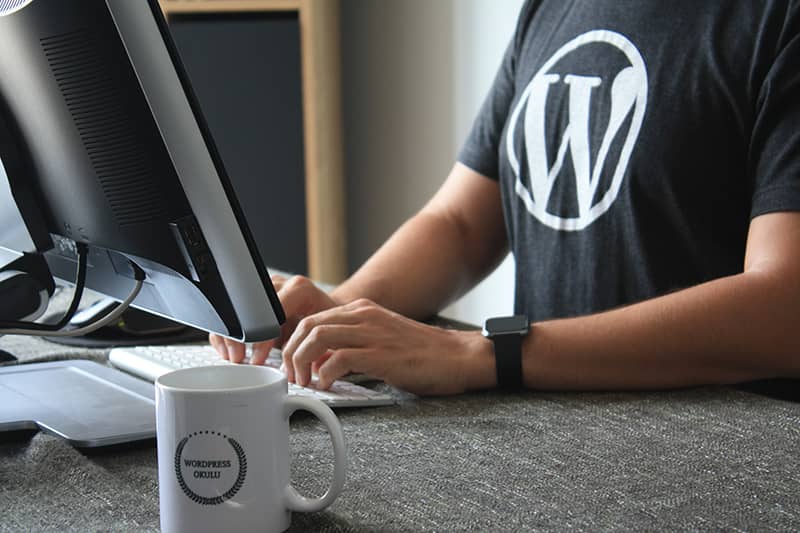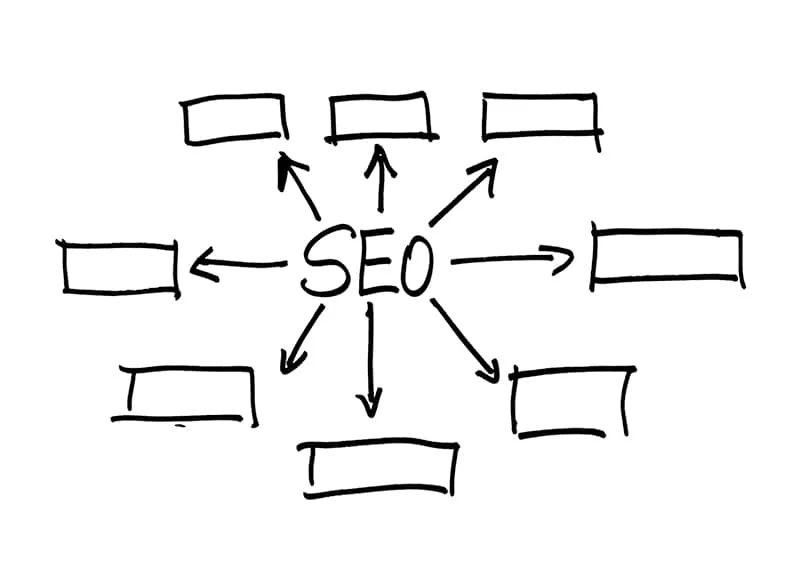10 Questions To Ask Your Web Designer Before Hiring Them

Table of Contents
Questions To Ask Your Web Designer
It is essential to choose the right web designer for your business. But how do you know who is right for you? What questions should you ask to ensure that they can provide the services and results you need? This article will help guide you as you discover which web design agency is best suited to create an effective website that reflects the true spirit of your company.
You will learn what factors are important in choosing a web designer, as well as specific questions to ask before making the final decision. With this invaluable information, you can rest assured that your website project is in good hands. These are the 10 questions to ask your web designer before hiring them. Let’s get started!

1) How long will it take to complete a web design project?
Completing a web design project doesn’t have to be a long, drawn-out process. With the right planning and communication between client and designer, projects can usually be completed in 2-4 weeks. This timeline is standard for most basic web designs, as long as the client gives timely feedback and provides content in a timely manner.
In some cases, depending on the complexity of the website or any additional features that are requested, it may take longer than 4 weeks to complete. However, this isn’t always necessary; with careful planning and collaboration between client and designer, even complex websites can be designed within this timeline.
To ensure you stay on track with your web design project timeline, it’s important to hire a professional web designer who knows how to plan and execute projects efficiently. A good web designer will have experience creating websites in different styles, with all the features you need for your project. They will also be well-versed in communication and collaboration, meaning they’ll be able to provide design feedback quickly and accurately.
By hiring an experienced web designer, you can rest assured that your website will be completed within the 2-4 week timeline without compromising on quality or accuracy. So if you’re looking for a fast yet high-quality website design project, make sure to hire a professional web designer!

2) What information do you require to get started?
Creating a website design involves more than just deciding on the right colors and graphics. To ensure your website is optimized for success, you’ll need to take into account numerous factors that will help guide your decisions when crafting the perfect design.
Here are some of the key pieces of information you should have handy before getting started on your web design project:
- The overall goal or purpose of the website – this could range from providing visitors with information about a business or product, allocating resources and services, displaying personal work/portfolio, etc.
- Your target audience – who will be using and interacting with the site? Knowing their interests, needs, and preferences can help to inform crucial aspects of the design process.
- The type of content that will be showcased – This can range from text, images and videos to multimedia elements like audio and animation. An understanding of the types of content you’ll be using on your website is essential for creating an effective design.
- Your budget – Knowing how much you have to spend will help you determine which features and functionalities are possible with your allocated funds as well as inform any necessary trade-offs when making decisions in the design phase.
- The timeline for completion – Understanding the timeline for launching a website will help establish realistic expectations throughout the entire development process, from planning stages through launch date.
- Your SEO objectives – If SEO is a priority for your website, it’s important to consider how the design and structure of the site will impact your ability to rank for targeted keywords.
- Your technical requirements – Does your website require any specific plugins or integrations? Are there any legal considerations that must be taken into account when creating your design? Knowing this in advance will help create a more cohesive end product.
- Your hosting provider – Do you have an existing relationship with a web host? If not, what kind of hosting do you need for optimal performance?
- Your content plan – Do you have any existing copy, images or videos that need to be incorporated into your website design? What kind of content will you be providing, and where on the site should it go?
- Your launch date – Are there any specific timing requirements for launching your new website? Knowing this in advance can help ensure a smooth transition from the old to the new version.
By being aware of these key elements right at the start of your web design project, you’ll be able to provide your designer with all the necessary information they need to create an effective website design that meets all of your stated objectives.
With this knowledge in hand, they’ll have everything they need to create a website that looks great and functions perfectly. Don’t hesitate – get started on your new website design project today!

3) How much does hiring a web design agency cost in Australia?
When it comes to creating a website for your business, you have several options. You can go down the DIY route and build one yourself. Or you can outsource the job to an experienced web design agency. But how much does hiring a web design agency cost in Australia?
The amount of money that you’ll need to spend on a website depends largely on what features you want to be included. A basic, static website will generally be cheaper than something with more complex features such as e-commerce or integration with third-party software systems. As a rough guide, simple websites tend to cost between $2,000 – $4,000 AUD with more complex sites costing up to $10,000 AUD or more depending on the complexity of the brief.
These prices generally include the cost of design, development, hosting and any on-going maintenance or updates that you may require. The cost will also vary depending on the web design agency you use – some agencies charge higher rates than others due to their experience and quality of work. You should always ask for quotes from multiple agencies before making your decision so that you can get the best deal possible.
It is important to remember that a good website isn’t just about aesthetics – it needs to be functional, secure and optimised for search engines if it is going to succeed in bringing in customers. This means that while it might be tempting to go with the cheapest quote, investing more money upfront could save you a lot of money in the long run. A good web design agency should provide you with all the necessary tools for SEO, security and analytics to ensure that your website is running smoothly and effectively.
When it comes to hiring a web design agency in Australia, it pays to do your research. Make sure that the company has a good reputation and is able to deliver on their promises. It’s also important to find out what kind of support they offer after launch – this could end up saving you time and stress down the line if something goes wrong. Make sure that you are happy with their portfolio before committing – this will be an indication of how professional they are and whether or not they have produced successful sites in the past.
The cost of hiring a web design agency in Australia can vary significantly depending on your needs. It’s important to shop around and get multiple quotes from different agencies so you can find one that fits within your budget. Make sure to do thorough research into the agency before committing – this will help ensure that you get the best result for your money.

4) When will we be able to preview your website building progress?
It’s important to stay up-to-date with your website’s progress as it is being built in order to provide feedback and help keep the project on track for completion. Web developers are able to provide previews of the building process so that you can see the progress and make sure everything is going according to plan. This means that you will be able to get a glimpse of what your website will look like before it is finished and make changes if needed before the project is completed.
By keeping up with these previews, you can also ensure that your website developer is doing their job correctly and staying on schedule. With this method, you can have peace of mind knowing that your website will be ready on time and give you the results that you desire.
It’s important to remember that your feedback is essential during this process so that the website developer can customise and tailor the website according to what you want. As such, it’s important to stay on top of previews and make sure that any changes made are in line with what you envisioned for your website.
By giving regular feedback and staying on top of previews, you can ensure that your web development project is on track and will be completed correctly. This way, you can have peace of mind knowing that your website will be built to meet your exact specifications.

5) Will the website be mobile friendly?
Having a mobile-friendly website is essential in today’s digital world. Not only are more people using their phones and tablets to access websites, but Google also rewards websites that are optimized for mobile devices with higher rankings in its search engine results pages. The better your website looks on a mobile device, the more likely it is that users will stay on your site for longer, thus increasing engagement and potential conversions.
Making your website mobile-friendly does not have to be an arduous task. There are several tools available online that can help you create a responsive design for your site or even convert it into a separate mobile version if you don’t have the resources or skills to do so yourself. Once you’ve taken care of any technical issues, you can start optimising your content for mobile devices. This includes making sure your images and videos are sized correctly and also ensuring that any text is legible on smaller screens.
If you’re feeling overwhelmed by this process, it may be worth talking to a web designer or developer who has experience in creating mobile-friendly websites. They will be able to advise you on the best approach to ensure your website ranks high in search engine results pages and performs well across different devices.
By investing time and resources into creating a mobile-friendly website, you’ll reap the rewards – users will stay longer on your site, engagement and conversions will improve, and Google will reward you with higher rankings in its search engine results pages.

6) What Content Management System (CMS) Do You Use?
Choosing a Content Management System (CMS) for your website is an important decision. It will determine the functionality and flexibility of your site, as well as how easy it is to update content. If you’re building a website from scratch – or updating an existing one – you need to communicate with your web designer about which CMS they are using.
When you have settled on a CMS, there are still more decisions to make, such as which templates and theme designs to choose from. A good web designer will be able to explain the advantages and disadvantages of different options and help you choose the right one for your needs. They should also be able to provide training on how to use the CMS so that you can take control of updating your website in the future.
In addition to choosing the right CMS and templates, you also want to make sure your web designer follows best practices when it comes to coding and development. This includes building a secure site with well-structured code that is optimised for search engine rankings, as well as ensuring compatibility across devices and browsers. With proper planning and communication between you and your web designer, these elements can all be taken care of before launch day arrives.
Understanding which CMS your web designer is using is key to achieving a successful website launch. It will give you the flexibility of being able to update content easily in the future, as well as help ensure that everything looks great on every device used by visitors. Popular CMS options include WordPress, Joomla and Drupal – each of which offer different capabilities and varying levels of complexity.
Your web designer should be able to explain the differences between these systems, as well as provide recommendations based on your specific website needs. They’ll also be able to advise on hosting and security concerns, along with providing technical support if necessary. It is important to get a full understanding of the system that will be used for your site before it goes live so you can feel confident in its performance and ability to keep up with future developments.

7) Can you supply stock images for the website if we don’t have professional photos?
Using stock images is a great option if you don’t have professional photos for your website. There are plenty of free stock websites to choose from, such as Unsplash and Pexels, which offer high-quality images that can easily be used in web design. However, it is important to note that when using free or paid stock photos, there may be limitations in terms of the quality of the image and its appropriateness for use on your website.
When it comes to creating a website that stands out from the crowd, investing in a professional photographer for custom photographs is essential. Professional photos can create an impactful visual experience for visitors that will make them remember your brand. Not only will they be unique to your business, but they will also be of a higher quality than those available through stock photo websites.
Professional photos offer you more control over the look and feel of your website. You can choose the exact image you want for each area of the site, allowing for consistency in design throughout. This will help create a cohesive web presence and enhance the overall user experience. Professional photos can also help bring personality to your digital presence and give visitors an insight into your company’s culture.
Free or paid stock images may suffice if your budget is tight, however investing in professional photography offers greater control over how your website looks and allows you to create a memorable visual experience for visitors that will make them sure to remember your website. Professional photography also offers a unique opportunity to show off your products, office space and staff in their best light.
When deciding between stock images and professional photos, it is important to consider the desired outcome for your website’s design. While spending money on professional photography may seem like an unnecessary expense, the results can be rewarding in terms of the overall look and feel of your website.

8) Do you follow SEO best practices when designing the website?
As a web developer, SEO best practices are essential for creating an effective website that is optimised for search engine visibility. Here are some key reasons why you should incorporate these practices into your development process:
To align your content with the right search intent, it’s important to ensure that any information and content on your site caters to the needs of users who land on the page. This will make it easier for them to find what they need quickly and make sure that they stay longer so they can take desired actions like signing up or making a purchase.
It’s also important to add meta descriptions and meta tags as these help inform search engines about the topic of each webpage on your site which in turn will help you to get more targeted and relevant visitors. Meta descriptions should be written in a way that’s clear, concise, and enticing enough for users to click through.
Image optimisation is another key element of SEO best practices that web developers need to consider. This involves optimizing images with descriptive captions, file names, and alt tags which help search engines better understand what the image or other media content is about. This will also make sure your website loads quickly which can have a positive impact on user experience
Page speed optimisation is yet another important aspect of SEO best practices that web developers should pay attention to. A slow page loading time affects search engine rankings as well as user experience since people don’t like waiting for pages to load.
Internal links are also a key element of SEO best practices and web developers should make sure they link related pages within the website. This helps search engines understand the structure of your website better and will lead to better indexing for all your pages.
SEO-Friendly URLs are not just important for SEO, but also makes it easier for users to remember the address of each page in your website. Your URLs should be easy-to-read, contain relevant keywords, and be short enough so that they fit into SERPs without being truncated by ellipses (…).
Rich user experience is essential when it comes to SEO best practices as search engines rank sites higher if they provide users with better experiences. This includes faster loading times, ease of use, fast response time and mobile optimisation.
Engaging content can also be a great way to attract users to your website. Make sure that the content you post is interesting, informative and entertaining for visitors to read. Adding visuals like videos or infographics can help make your content more attractive as well.
Finally, building backlinks is an important SEO practice that can help you boost your ranking on search engine result pages (SERPs). By getting other websites to link to yours, it shows search engines that you are an authority in their niche and gives you more credibility.
By incorporating these SEO best practices into your website design strategy, you can ensure that your site will be optimized for search engine success. You’ll have a better chance of ranking higher in search results, which can result in more organic web traffic and an increased conversion rate. Not only will this help improve the visibility of your website, but it can also create a positive first impression for potential customers and help them find exactly what they need.

9) Do you have a website client portfolio?
If you are in the market for a web developer, one of the most important questions you should ask is if they have a client portfolio. A strong portfolio can speak to an individual or company’s experience and expertise, showcasing their best work to date.
When evaluating a web developer’s portfolio, take the time to examine each project carefully. Ask yourself: does this project demonstrate technical capabilities? Does it showcase creativity? Most importantly, does it reflect a commitment to quality? Analyzing the projects in depth will give you invaluable insight into what kind of work the developer is capable of producing.
Look at case studies and see how past clients fared after working with the developer; were their website goals achieved? Did they have positive experiences? Did their website reach the desired audience and deliver on its objectives?
Analyze a web developer’s portfolio not only to gauge their skill level but also to get an idea of their style. Do they use a lot of bold colours or prefer a more muted aesthetic? Do they prefer modern design elements or traditional layouts? This will give you an indication as to whether or not the developer is in line with your vision for your own project.
Consider what technology the web developer has experience with. Does the portfolio feature websites built on popular platforms such as WordPress, Shopify, Magento etc.? Do they have experience working with content management systems that are tailored to your particular industry needs? Knowing this information beforehand can help ensure that the web developer you choose is capable of creating a website according to your desired specifications.
Take a look at the client testimonials and reviews associated with the portfolio. Have past clients been happy with the work they had done or did they experience any problems? Did they find any areas where the web developer could have improved upon? Reviews are invaluable when it comes to selecting a quality web developer, as past customer experiences will give you an accurate idea of how reliable and competent that person is.
The last thing to consider when looking at a client portfolio is whether or not it shows evidence of successful launches, updates and maintenance for websites in their care. A good portfolio should also showcase other services such as SEO and marketing, as these can be invaluable for driving more traffic to your website. If the portfolio only contains examples of work that is not SEO enabled, then it’s possible that the web developer may not have the necessary skills or experience to properly optimise your website.
By asking a web developer if they have a client portfolio and taking some time to review it, you’ll be able to ascertain whether their past work has been successful and whether they are the right person for your project. Not only will this allow you to make an informed decision about who you would like to hire for your project but also give you peace of mind that you’re working with someone who knows what they’re doing.

10) Is there any after care support once the website project is completed?
Having a website developer that offers aftercare support is essential for the long-term health of your website. Website support ensures that any problems or issues you encounter are dealt with in a timely and professional manner, which can help protect against costly downtimes and lost business opportunities.
Without web support, if something goes wrong on your site then it could be difficult to fix without the help of a professional web developer. Even if the initial design and development of your site was done correctly, there still needs to be regular maintenance and updates to ensure everything is running smoothly. This includes security patches, content updates, hosting configuration changes and more – all of which require specialist knowledge and skill.
A good web developer should provide ongoing website support to ensure that any issues can be resolved quickly and efficiently, to keep your website running optimally and minimize potential losses. Without this support, you could face serious consequences like unplanned downtime or data breaches. Both of these can have a devastating impact on your business’s reputation and bottom line.
Website support from the web developer who originally built your site is invaluable for keeping it up-to-date and ensuring all functionality remains optimal. Ask about post-project care before engaging with a web development team so that you know exactly what kind of help you’ll get once the project is complete. It may cost more initially, but having dependable aftercare will give you peace of mind and protect your business in the long run.
A reliable website support provider will be available to handle any problems that arise, like resolving bugs in the code or performing regular maintenance checks on the website. They can also help you update content, add new features and make sure that your site is secure from hackers or malicious software and they can provide valuable advice on improving the performance of your website.
Without website support from a professional web developer, you expose yourself to a range of risks. Your website could become vulnerable to malicious attacks and hackers, leaving your business data exposed. You may also find that your website starts to run slowly or frequently crashes, resulting in lost customers and opportunities. Bugs in the code can be difficult to identify and fix without the help of a professional web developer.
As technology progresses and new trends are introduced, it is important to keep your website up to date with the latest changes. Without website support, you could fall behind your competitors who are taking advantage of the latest features and technologies.
Website support is an essential part of any successful website project. With a web developer providing after care support, you can be sure that any issues will be resolved quickly and efficiently. The web developer will also provide regular maintenance and security checks, ensuring that your website is always running smoothly.

Questions To Ask Your Web Designer
Talking to your web designer throughout the website development process is an essential part of creating a successful website. It ensures that you get exactly what you want from the finished product, and helps eliminate complications down the road. Communication allows both parties to keep each other up-to-date on the progress, share ideas and offer feedback that could help improve the website.
It also gives you an opportunity to voice any questions or concerns that come up during the development process. This is important not only for getting answers in a timely manner, but it also avoids surprises that could be costly and time-consuming if changes have to be made to the website later on.
When talking with your web designer, make sure to be clear and concise about what you want from the website. Ask questions to get a better understanding of the development process. This will help you have realistic expectations on deadlines and the end product.
Take time to explain your vision for the website and its purpose. This will help your web developer create a website that meets all your needs and expectations. A great website is one that looks good, functions well and is easy to use for visitors.
Communicating with your web designer throughout the process will ensure that you have a successful website development experience. You’ll be able to provide feedback on progress, make changes where needed, and ensure that you are happy with the end product. This will help you get the most out of the process and ensure that you are satisfied with the finished website.
Leave A Comment
Loved this article? Please consider sharing it with your friends…

Peter Lowen
Senior Web Developer | CEO
Peter Lowen is the founder and CEO of Constructive Visual, a website design and hosting company. He has been creating websites since 2005 and writes content on business, marketing, web design, sales training, web hosting and WordPress related topics.
Enjoyed Our Article? We've found a few more for you!
Responsive Web Design – Best Practices for a Responsive Website
In an era where digital presence is imperative, having a responsive website is no longer optional—it’s essential. At Constructive Visual,...
Strengthen your Perth & Wheatbelt business’s online presence with tailored website design and hosting, raising visibility, enhancing user experience, and...
Branding is essential for any business, big or small. It helps to create a unique identity and sets you apart...
Creating a Strong Online Foundation – Small Business Web Design in Perth
In today’s digital age, having a well-designed website is crucial for small businesses in Perth. A professionally designed website can...










